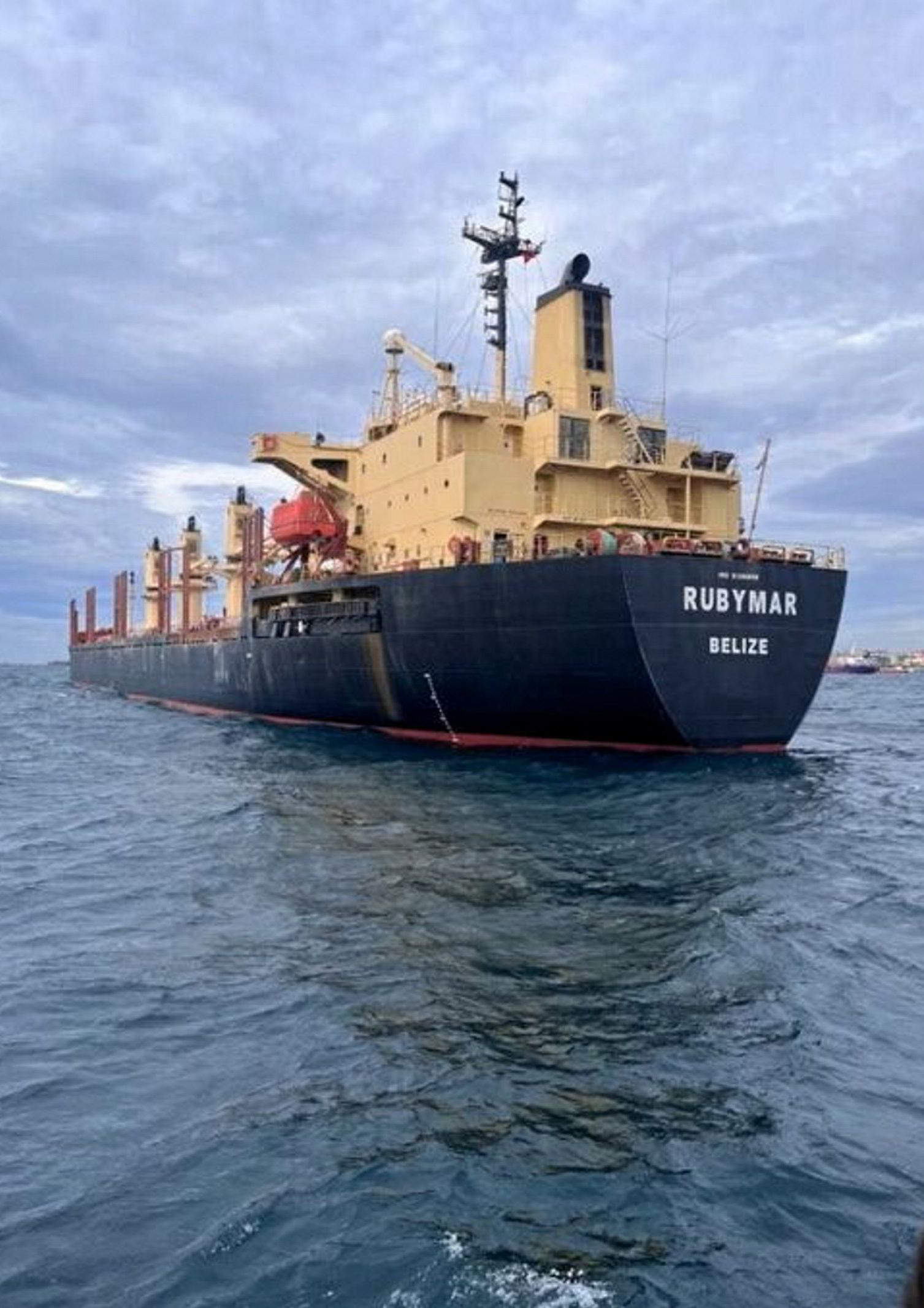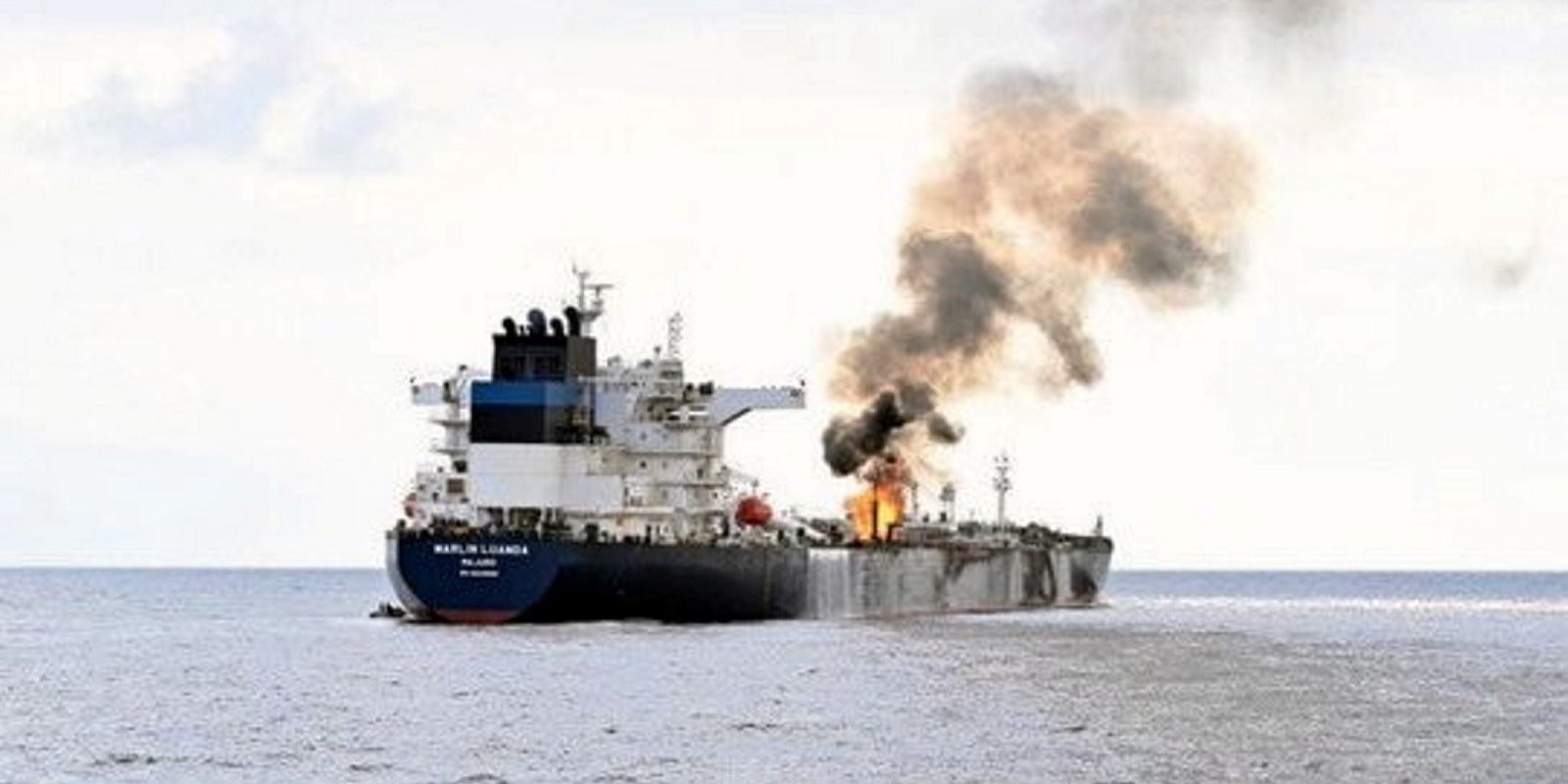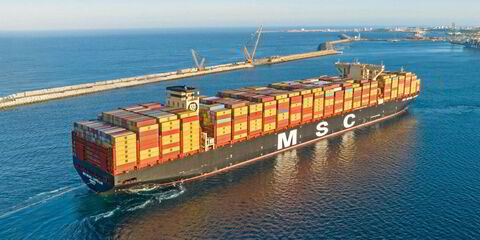The Houthis have made their most damaging attack yet against shipping, and deployed new weaponry, in an escalation of their campaign against one of the world’s most important trade routes.
Multiple vessels have come under fire in the past few days, and one crew abandoned ship, as the Iranian-backed militant group stepped up its bombardment of ships in the Red Sea and beyond, trying to pressure Israel and its allies to end the war in Gaza.
The rebels also unleashed unmanned underwater vehicles, or submarine drones, for the first time in the conflict that has caused major disruption to shipping for more than three months.
The US military claimed its first defensive strike against the underwater drones over the weekend.
“From a maritime standpoint, looking back over the past three to four decades, I’m not sure there’s been a more tense environment,” said Aaron Roth of security and risk management company the Chertoff Group.
The events marked what Ian Ralby, a maritime security expert and chief executive of Maryland-based consultancy IR Consilium, called the “fourth phase of escalation” by the Houthis.
The episode started with the brazen seizure of Ray Car Carriers’ 5,100-ceu Galaxy Leader (built 2002) in November and has since spread out geographically and grown in number, with more than 50 ships targeted.
Phase two was the launch of aerial assaults using anti-ship ballistic missiles and aerial drones.
Ralby, who also serves as a senior fellow at the think-tank Center for Maritime Strategy and the Atlantic Council, said that was followed by a third phase using remote-control bomb boats.
The Houthis had already been telegraphing since December that they had underwater capabilities, with a threat to take out internet cables in the Bab el-Mandeb strait.
Ralby warned US lawmakers at a hearing in January that the militia had worked on the submarine drones and remote-control bomb boats.
And even if the US and UK do take retaliatory action to the latest spate of violence, he does not believe it will stop the determined Houthis.
“Even if we blow everything up … they wouldn’t care,” he said.
Ralby said the Houthis could continue to escalate in multiple ways, including using small fishing boats to mount piracy-style attacks.

The group has already employed rudimentary techniques to identify targets, including sending small spotter craft to within a few thousand yards of ships that have subsequently been attacked, said Corey Ranslem, chief executive of security firm Dryad Global.
He warned that the long-term implications of the Houthi attacks could be a more dangerous environment for shipping across the world if the rebel group’s tactics are seen to work.
“I'm hoping that this is not the new normal, as far as state-backed attacks on commercial ships,” he said.
“But this is something that we’re going to watch closely to see how this plays out.
“And to see, if there’s a conflict within a region, does it spill over into maritime?”
For Chris Long, intelligence director at security provider Neptune P2P, the fear is the conflict carrying on beyond a potential ceasefire agreement.
He said if the Houthis feel their attacks on commercial shipping succeeded in prompting a deal, they may keep attacking.
“The Houthis might see it as, ‘Well, you know what? We’ve forced them to stop their operation in Gaza, let’s try and keep it going and try to force them to recognise Palestine’,” he said.
But as long as the conflict is going on, Long said, the attacks would probably continue in some form: “We won’t reach the next stage until that stops.”
In response to the latest spate of attacks, the European Union launched a new maritime security operation, EUNAVFOR Aspides, to protect shipping in the troubled corridor.
A French warship helped a major container carrier take tentative steps back into the corridor on Tuesday.
France’s CMA CGM said on Tuesday that the frigate Alsace escorted its 16,000-teu CMA CGM Jules Verne (built 2013) through the Red Sea.
The ship passed without incident more than two weeks after CMA CGM suspended transits.

But security experts warned that the US-UK tactic of using air attacks to target Houthi sites in Yemen will have limited impact on stopping the bombardment of shipping.
“Unless you have boots on the ground, you cannot control the terrain from the air,” said Conrad Thorpe, chairman of Salama Fikira Group, which helped protect shipping during the piracy crisis off Somalia.
He said the exodus of warships to confront the state-backed threat from the Houthis had directly contributed to new cases of piracy off the Somali coast.
Ralby believes the best way to counter the Houthi menace to the Red Sea and Gulf of Aden is to withdraw the US military, prop up Egypt’s ability to confront the threat and reduce the number of merchant ships that can be targeted.
“The fewer ships that go through, the better at this point,” he said. “The US Navy is doing a hell of a job protecting Chinese and Russian ships; that is effectively the majority of what we’re protecting.”







